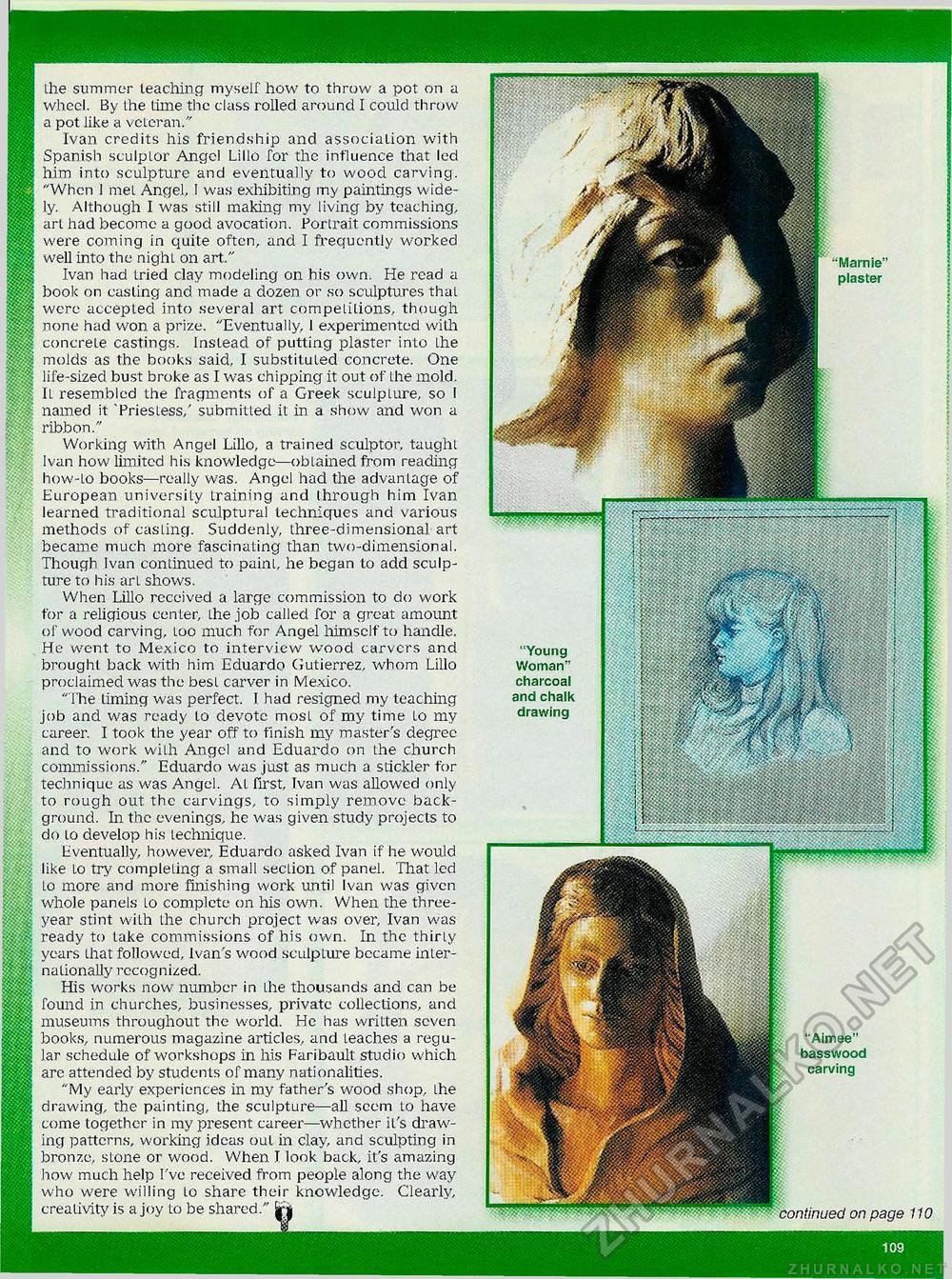Creative Woodworks & crafts 2000-03, страница 109
the summer leaching myself how to throw a pot on a wheel. By the time the class rolled around I could throw a pot like a veteran." Ivan credits his friendship and association with Spanish sculptor Angel Lillo for the influence that led him into sculpture and eventually to wood carving. "When 1 met Angel, I was exhibiting my paintings widely. Although I was still making my living by teaching, art had become a good avocation. Portrait commissions were coming in quite often, and I frequently worked well into the nighL on art." Ivan had tried clay modeling on his own. He read a book on casting and made a dozen or so sculptures that were accepted into several art competitions, though none had won a prize. "Eventually, I experimented with concrete castings. Instead of putting plaster into the molds as the books said, I substituted concrete. One life-sized bust broke as I was chipping it out of the mold. It resembled the fragments of a Greek sculpture, so I named it 'Priestess,' submitted it in a show and won a ribbon." Working with Angel Lillo, a trained sculptor, taught Ivan how limited his knowledge—obtained from reading how-to books—really was. Angel had the advantage of European university training and through him Ivan learned traditional sculptural techniques and various methods of casting. Suddenly, three-dimensional art became much more fascinating than two-dimensional. Though Ivan continued to paint, he began to add sculpture to his art shows. When Lillo received a large commission to do work for a religious cen ter, the job called for a great amount of wood carving, too much for Angel himself to handle. He went to Mexico to interview wood carvers and brought back with him Eduardo Gutierrez, whom Lillo proclaimed was the best carver in Mexico. " The liming was perfect. I had resigned my teaching job and was ready lo devote most of my time to my career. I took the year off to finish my master's degree and to work with Angel and Eduardo on the church commissions." Eduardo was just as much a stickler for technique as was Angel. Al first, Ivan was allowed only to rough out the carvings, to simply remove background. In the evenings, he was given study projects to do to develop his technique. Eventually, however, Eduardo asked Ivan if he would like Lo try completing a small section of panel. That led Lo more and more finishing work until Ivan was given whole panels to complete on his own. When the three-year stint with the church project was over, Ivan was ready to take commissions of his own. In the thirty years lhat followed, Ivan's wood sculpture became internationally recognized. His works now number in the thousands and can be found in churches, businesses, private collections, and museums throughout the world. He has written seven books, numerous magazine articles, and Leaches a regular .schedule of workshops in his Faribault studio which are attended by students of many nationalities. "My early experiences in my father's wood shop, the drawing, the painting, the sculpture—all seem to have come together in my present career—whether it's drawing patterns, working ideas out in clay, and sculpting in bronze, stone or wood. When I look back, it's amazing how much help I've received from people along the way who were willing lo share their knowledge. Clearly, creativity is a joy to be shared." plaster "Young Woman" charcoal and chalk drawing "Aimee" basswood carving on page 110 109 |








